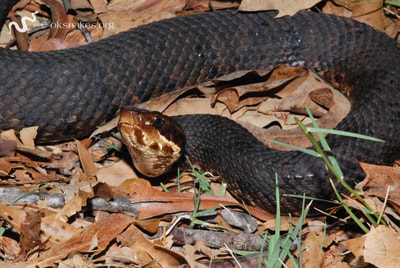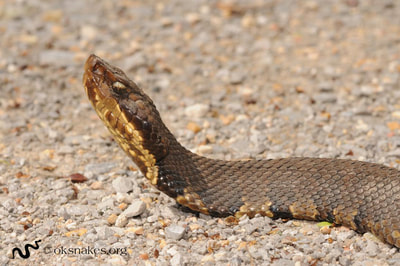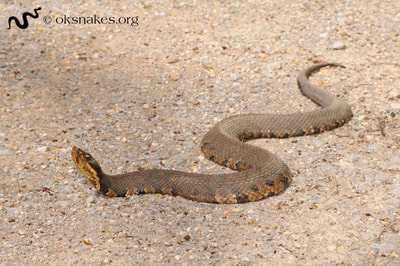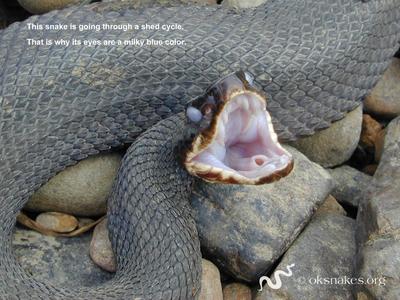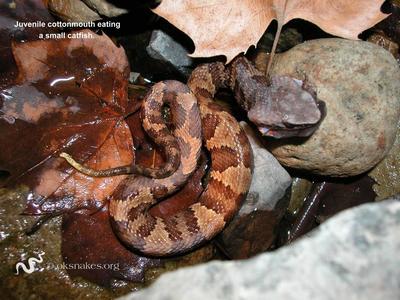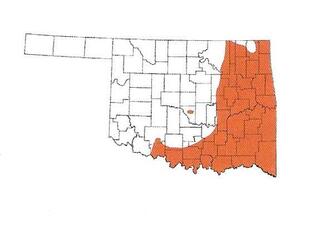Northern cottonmouth
Agkistrodon piscivorus
Agkistrodon piscivorus
VENOMOUS
Description:
This heavy-bodied snake has a pattern that is typically obscured by its dark coloration. The back is usually a mix of black, brown, and olive green, and the belly is white or cream-colored with black mottling. This snake has weakly keeled scales, a vertical pupil (not round *), and an obvious heat-sensing pit between the eye and nostril.
* Note: Pit viper pupils can often appear round in certain lighting, such as in photos utilizing a flash. Do NOT use pupil shape as a sole means to identify any snake in Oklahoma.
Size:
Adults 20 - 42 inches (51 - 107 cm)
Prey:
Fish, amphibians, birds, and sometimes other snakes.
Reproduction:
Mates in spring and gives birth to 1 - 15 young in late summer. Females often have babies every other year.
Habitat:
Near permanent sources of water.
Other Information:
Newborn cottonmouths have a bright, distinct pattern, which they lose as they darken with age, and they have a yellow tail tip that they use as a lure to catch prey. Like their pattern, they also lose this tail coloration as they grow.
The name "cottonmouth" is derived from the snake's habit of opening its mouth in a defensive posture when it feels threatened. Other names for this snake are "water moccasin" and "trap jaw."
Why doesn't the range map show this species in my county?
